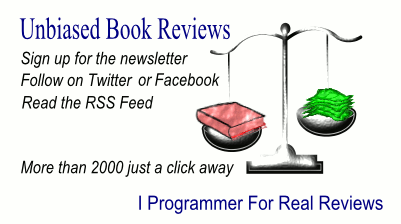|
Author: Paul Boag
Publisher: Manning, 2009
Pages: 296
ISBN: 978-1933988450
Aimed at: Website owners
Rating: 5
Pros: Good balance of theory and practice
Cons: First and last chapters are a bit waffely
Reviewed by: Sue Gee
Although aimed at anybody who wants a successful web and written mainly for the non-professional this book is good enough to recommened to professionals as well.
In its first chapter it looks at three principles of website management starting with "Balance conflicting priorities". Here author Paul Boag suggests that there are six pillars of web design: Usability; Accessibility; Aesthetics; Development; Content and Objectives and that just as in a building pillars need to be equal so they should in web design. He then goes on to outline the alternatives for being a "website owner" as part of the second principle "Define your role", and again lists six: visionary, advocate, evangelist, content guardian, project co-ordinator and referee. I was beginning to feel overwhelmed by its lists but with the third principle, "Plan for the future" the book seemed to settle into its stride. I liked the inclusion of the "Next actions" section rounding off this and every subsequent chapter.
Many books go downhill once they have stated their early objectives but this book is an exception to the rule - as it focuses on the practical it gets more useful. While other books on the topic make unrealistic claims this one is moderate and balanced. There is worthwhile advice in every chapter. Chapter 2 on "Stress-free planning" has practical help with setting and monitoring your goals including reviewing and testing competing sites. It mentions real tools you can use for this. The idea of creating personas for fictional users to aid design decisions also seems sound.
As the book progresses the focus on users, testing and accessibility is frequently at the fore. This is done in a jargon free way - no mention of UX in this book even in the index. It also tries to explain some of the buzzwords - choosing Web 2.0 and AJAX as the prime candidates. The problems discussed are practical such as a site not working in a wide enough range of browsers, whether to use a content management system and how to choose a hosting package.
The final chapters touch on concerns for existing as well as new websites.Chapter 10, "Driving traffic" looks at the pitfalls of being blacklisted on Google for using unauthorised methods as well as the use of viral marketing and the need to monitor marketing efforts. Chapter 11, "Engaging your visitors" looks at community building and conversations with users. Chapter 12 has the title "Planning for the future. It briefly confronts the problem of the "broken" website and even more briefly touches on emerging platforms such as cell phones. Compared to chapters in the middle of the book it seems waffley and jargon-laden but it is short and easily dispensed with and so does not detract from the impression of a well balanced, realistic and helpful manual for anybody wanting a successful website.
Continuous Architecture In Practice (Addison-Wesley)
Author: Murat Erder, Pierre Pureur and Eoin Woods
Publisher: Addison-Wesley
Pages: 352
ISBN: 978-0136523567
Print: 0136523560
Kindle: B08ZRTQGLJ
Audience: Software Architects
Rating: 3
Reviewer: Kay Ewbank
This book sets out the case for why software architecture is more important than ever, and in p [ ... ]
|
SQL Query Design Patterns and Best Practices
Author: Steve Hughes et al
Publisher: Packt Publishing
Pages: 270
ISBN: 978-1837633289
Print: 1837633282
Kindle: B0BWRD7HQ7
Audience: Query writers
Rating: 2.5
Reviewer: Ian Stirk
This book aims to improve your SQL queries using design patterns, how does it fare?
| | More Reviews |
|
